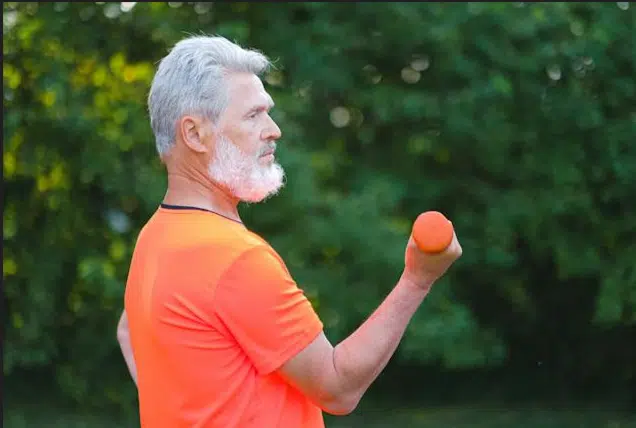Older Adult’s Guide to Exercise and Physical Activity
Posted in Senior Health Care Tips
Most conversations around promoting long-term health focus on subjects like regular medical screenings and developing healthier habits, however physical activity and exercise often get shunted into the “nice to have” category.
In reality, working a few minutes of light exercise into your daily routine is one of the most important ways you can slow the onset of chronic conditions like diabetes and arthritis, lower your risk of in-home accidents through improved balance, and even promote regular sleep cycles and better mental health.
With all these possible benefits, it’s easy to want to jump right into a new fitness routine, however, care and consideration should be taken to gradually build to a full exercise regimen in order to avoid injury. 
Set Reasonable Goals
Beginning an exercise routine after a period of inactivity can (and should!) take time. Diving into a difficult workout regime can cause more injuries than it prevents, and feeling sore and exhausted after a strenuous workout can deter you from future attempts. When in doubt, start small and don’t be afraid to ask your doctor or other health care professionals for guidance.
The National Institute on Aging (NIA) recommends adults over 65 aim for roughly 150 minutes of physical activity every week. Keep in mind that “physical activity” can mean any activity that makes you breathe hard, so activities like carrying groceries, yard work, brisk walking, or even dancing can all be counted towards this 150 minute goal.
Tips for Getting Started
Start small – Setting out a huge exercise routine and performing it once or twice is not going to preserve your health. In fact, overexertion could have the opposite effect, leaving you sore and uninterested in following up with future exercise. Try to initially limit exercise to 10 minute stretches throughout the day.
Work exercise into your schedule Everyone has downtime throughout the day, or a recreational activity they fall back on when there is nothing else to do. Rather than immediately going for your television’s remote control or picking up a novel, try to make a habit of performing 10 minutes of light exercise before settling into your favorite seat.
Limber up! – This tip is especially important for people who have not exercised in a long time. The NIH guide provides great tips on how to make sure your body is ready for exercise. Stretching out your arms, legs, neck and back might look silly at first, but limbering up the parts of your body you plan to exercise go a long way in preventing injury.
Have fun! – They call it “working” out, but exercise shouldn’t feel like torture. Try to find physical activities you enjoy, or find a friend who is also interested in getting more exercise. Cycling, dancing, tennis, or even the bending and stretching that comes with a good round of bocce could be just what the doctor ordered.
Building a Four-Corners Exercise Plan
The National Institute on Aging recommends older adults develop a routine that challenges and develops these four types of fitness.
Endurance
Endurance-focused exercises are things like walking, jogging, swimming or even dancing. These activities improve your cardiovascular health and make it easier to stay active as you age. Early on, you will probably want to keep this exercise limited to 10 minute increments and slowly build up these stretches as your abilities improve.
Strength
Even minor improvements to your body’s strength can have a big impact on day-to-day activities like climbing stairs and carrying groceries. Short sets of exercise with light (1 or 2 pound) weights or a resistance band are a great way to start. Just be sure to allow for lots of rest time between exercises to avoid injury.
Balance
No one likes to take a fall, and that goes doubly so for older adults, at least 300,000 of whom are hospitalized with fall-related broken hips every year. Improving your balance with lower-body strength exercises is a great way to prevent falls and help you stay independent. These exercises can be simple, like standing on one foot or heel-to-toe walking, or can take the form of more organized activities like Tai Chi or a dance class.
Flexibility
Maintaining a good range of motion with your arms, legs, back and neck will not only make it easier to perform day-to-day activities, but help you avoid the “aches and pains” many associate with growing older. Basic stretches for your shoulders, upper arms, and calves are a good place to start.
SelectCare has helped New Yorkers live happier, healthier lives in their long-time homes for nearly 40 years, providing in-home health care services and support to overcome challenges great and small.
To learn more about SelectCare and how we help, call SelectCare today, request a complimentary in-home care guide, or read our client testimonials.
